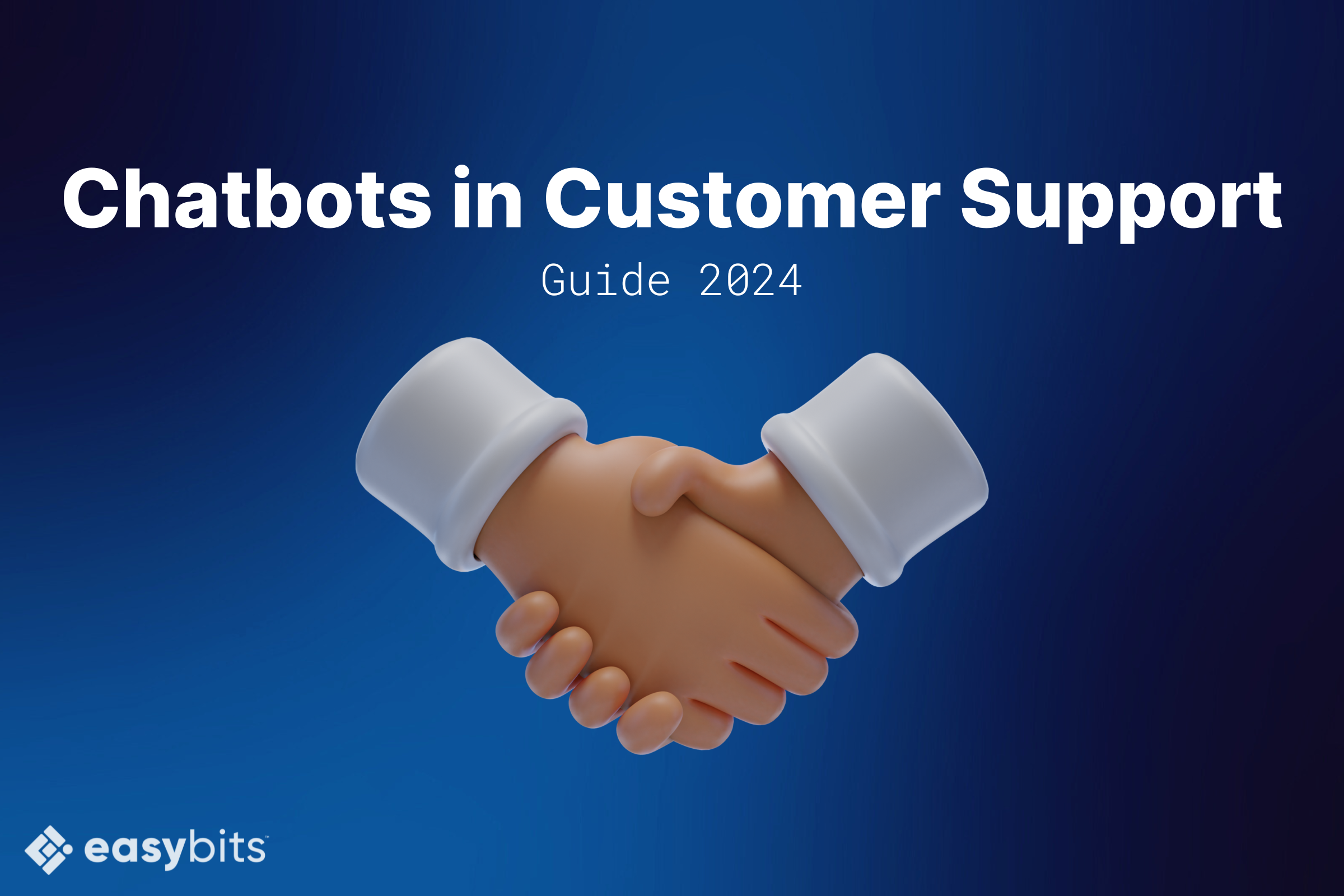Chatbots in Customer Support – Guide 2025

In the rapidly evolving landscape of customer service, chatbots have become an indispensable tool. In fact, 73% of buyers now expect websites to feature digital assistants for convenient interactions. No longer limited to basic scripted interactions, modern chatbots are sophisticated, AI-powered agents capable of managing complex inquiries, delivering personalized experiences, and significantly enhancing customer satisfaction.
In this guide, we explore the current state of chatbots in customer support, outline their benefits, and provide best practices for implementation and optimization.
Chatbots in Customer Support: The Current State
The integration of AI and NLP technologies has revolutionized the functionality of chatbots, enabling them to understand and respond to customer inquiries with unprecedented accuracy. In 2025, chatbots are not just a supplementary tool; they are at the forefront of customer service strategies, particularly in industries where customer interaction volumes are high.
Industries Using Chatbots
- Banking Industry: Chatbots offer services such as personalized recommendations, loan processing, and fraud prevention.
- Insurance Industry: AI bots simplify claims, automate renewals, and guide customers through policy selection.
- Healthcare Industry: Chatbots streamline tasks like appointment booking and symptom checks, improving patient care.
- Utilities Industry: Utilities companies use bots for billing and outage reporting, handling thousands of customer inquiries monthly and enhancing operational efficiency.
- Hospitality Industry: Chatbots manage routine inquiries and provide personalized service, reducing workloads.
- Airlines: Chatbots help with ticket rescheduling and flight status checks.
Adoption rates have soared across various sectors, with both B2B and B2C companies leveraging chatbots to meet the growing demand for 24/7 customer support. This trend is underpinned by customer expectations, which have evolved significantly. Today’s customers expect immediate, accurate, and personalized responses, and chatbots are uniquely positioned to deliver on these expectations, often surpassing the capabilities of traditional customer service models.
Key Benefits of Using Chatbots in Customer Support
The benefits of deploying chatbots in customer support are multifaceted, making them a critical asset for businesses aiming to enhance customer experience and operational efficiency.
- Cost Efficiency and Scalability: Chatbots reduce customer support costs by automating repetitive tasks like answering FAQs, processing transactions, and collecting customer information. With 74% of internet users preferring chatbots for simple questions, this automation frees up human agents for more complex issues. Additionally, chatbots can scale to handle large volumes of inquiries, especially during peak periods, further enhancing operational efficiency.
- 24/7 Availability: Chatbots offer round-the-clock support, ensuring customers get assistance anytime, regardless of time zones or holidays.
- Enhancing Customer Experience: By delivering quick, consistent, and personalized interactions, chatbots significantly improve the customer journey. With 62% of respondents preferring to engage with digital assistants over waiting for human agents, chatbots provide a more efficient and satisfying experience. Advanced AI also allows chatbots to tailor responses over time, further boosting customer satisfaction and loyalty.
- Direct Customer Channel: Implementing chatbots in platforms like WhatsApp, Telegram, or Facebook Messenger creates a direct communication channel with customers. This channel supports real-time interactions and allows businesses to send targeted updates or product recommendations, enhancing engagement and personalized marketing.
- Multi-Channel Approach: Chatbots manage interactions across multiple platforms simultaneously, providing a seamless experience across all customer touchpoints. This unified communication boosts accessibility and convenience for both customers and businesses.
- Data Insights: Chatbots gather valuable data on customer needs, preferences, and pain points. This information helps businesses identify trends, understand behavior, and refine offerings, leading to better decision-making and continuous optimization.
Best Practices for Implementing Chatbots in Customer Support
Successfully implementing chatbots requires careful planning and consideration. From selecting the right platform to ensuring proper training and continuous optimization, each step plays a crucial role in maximizing the benefits of chatbot technology. Here is a short guide to the best practices for implementing chatbots:
- Choosing the Right Platform:
- No-Code/Low-Code Solutions: For many businesses, especially those without extensive IT resources, no-code or low-code chatbot platforms like easybits offer a practical solution. These platforms allow businesses to setup sophisticated chatbots without the need for programming expertise. This approach not only accelerates deployment but also makes it accessible for non-technical users to manage and optimize their chatbot solutions.
- Custom Solutions: For businesses with complex requirements or the need for highly specialized chatbot functionalities, custom-built solutions are often the best choice. These solutions allow for complete control over the chatbot’s design and behavior. Custom chatbots can be tailored to meet specific business needs, such as handling unique customer service workflows or integrating with proprietary software. While custom solutions require more development resources and time, they offer the ability to create a chatbot that perfectly aligns with your company’s goals and brand identity.
- Training and Optimization: Proper training of your chatbot is essential for its success. This involves configuring the chatbot to understand and respond to a wide range of customer queries, as well as setting up escalation paths for issues that require human intervention. Platforms like easybits simplify this process by providing intuitive interfaces and automated updates that help keep your chatbot’s knowledge base current and accurate.
- Continuous Improvement: The effectiveness of a chatbot should be regularly evaluated and optimized based on performance data and customer feedback. Continuous improvement involves refining the chatbot’s responses, updating its training data, and expanding its capabilities as customer needs evolve. easybits simplifies this process by offering an intuitive interface that integrates the training and response refinement of chatbots, allowing businesses to continuously enhance their chatbot’s performance with ease.
- Balancing Automation and Human Touch: While chatbots can handle a significant portion of customer interactions, it is important to strike a balance between automation and human support. Ensuring seamless handoffs to human agents when necessary is crucial for maintaining a positive customer experience. easybits and similar platforms offer easy integration with live chat systems, enabling businesses to define clear escalation protocols that ensure customers receive the best possible service.
☝️ Not sure where to start?
We offer free consultations with our experts to help you find the perfect solution for your company’s needs. Simply book a meeting with one of our specialists to get started.
Book a Free Consultation Now!Measuring Chatbot Success
Measuring the success of your chatbot is crucial to understanding its impact on your customer support operations and identifying areas for improvement. The following key metrics should be closely monitored:
- First Response Time (FRT): How quickly your chatbot responds to customer inquiries. Faster response times generally correlate with higher customer satisfaction.
- Customer Satisfaction (CSAT): Direct feedback from customers on their experience with the chatbot, often gathered through post-interaction surveys.
- Chatbot Resolution Rate: The percentage of interactions that are successfully resolved by the chatbot without the need for human intervention.
In addition to these metrics, gathering qualitative feedback from customers can provide deeper insights into the chatbot’s performance. Furthermore, calculating the return on investment (ROI) of your chatbot involves considering cost savings, improvements in customer retention, and overall efficiency gains.
Conclusion
The importance of adopting and optimizing chatbot technology cannot be overstated. With 97% of companies anticipating that new teams, including training, customer support, and HR, will adopt generative AI in the near future, businesses that effectively leverage chatbots will not only meet but exceed customer expectations. This strategic adoption will position them ahead of the competition in an increasingly digital marketplace.
Ready to transform your customer support strategy? Explore how easybits' self-service platform can help you effortlessly build and optimize automations to meet your needs.
Book Your Consultation Now!References and Additional Information
For further reading, refer to these sources:
- 'Chatbot Statistics: What Businesses Need to Know About Digital Assistants' here
- 'Generative AI in the enterprise 2024 survey' here
Check our videos to find out more
